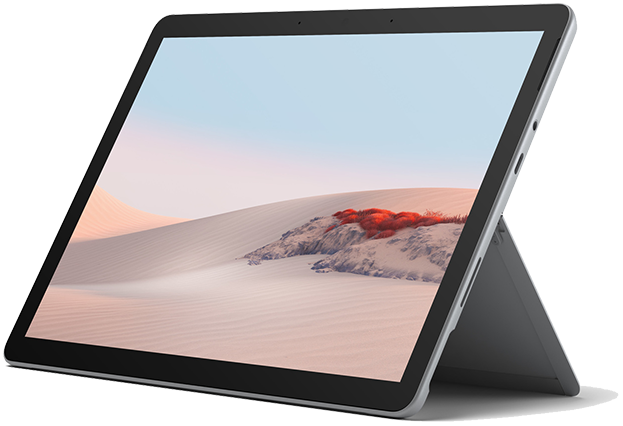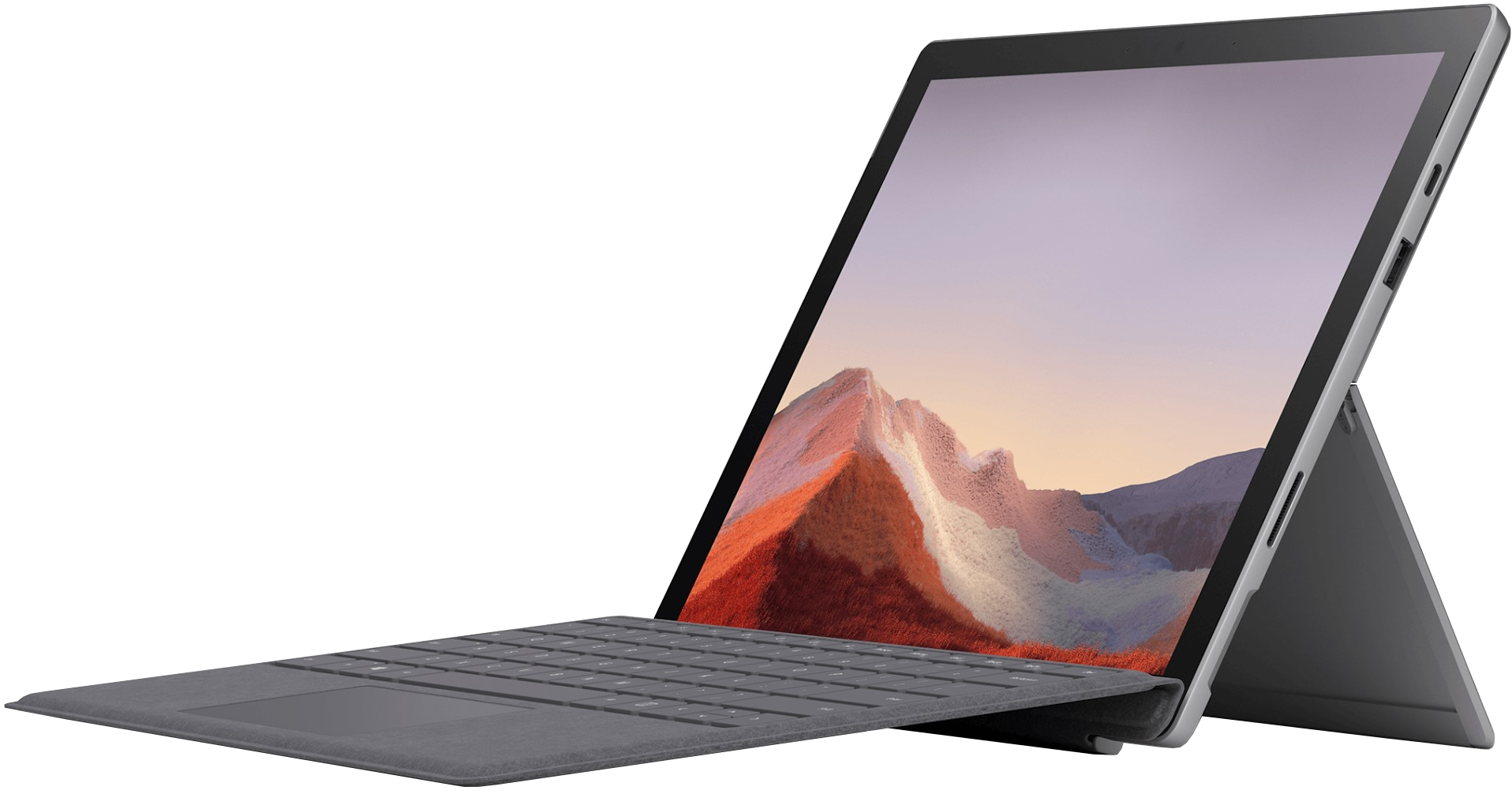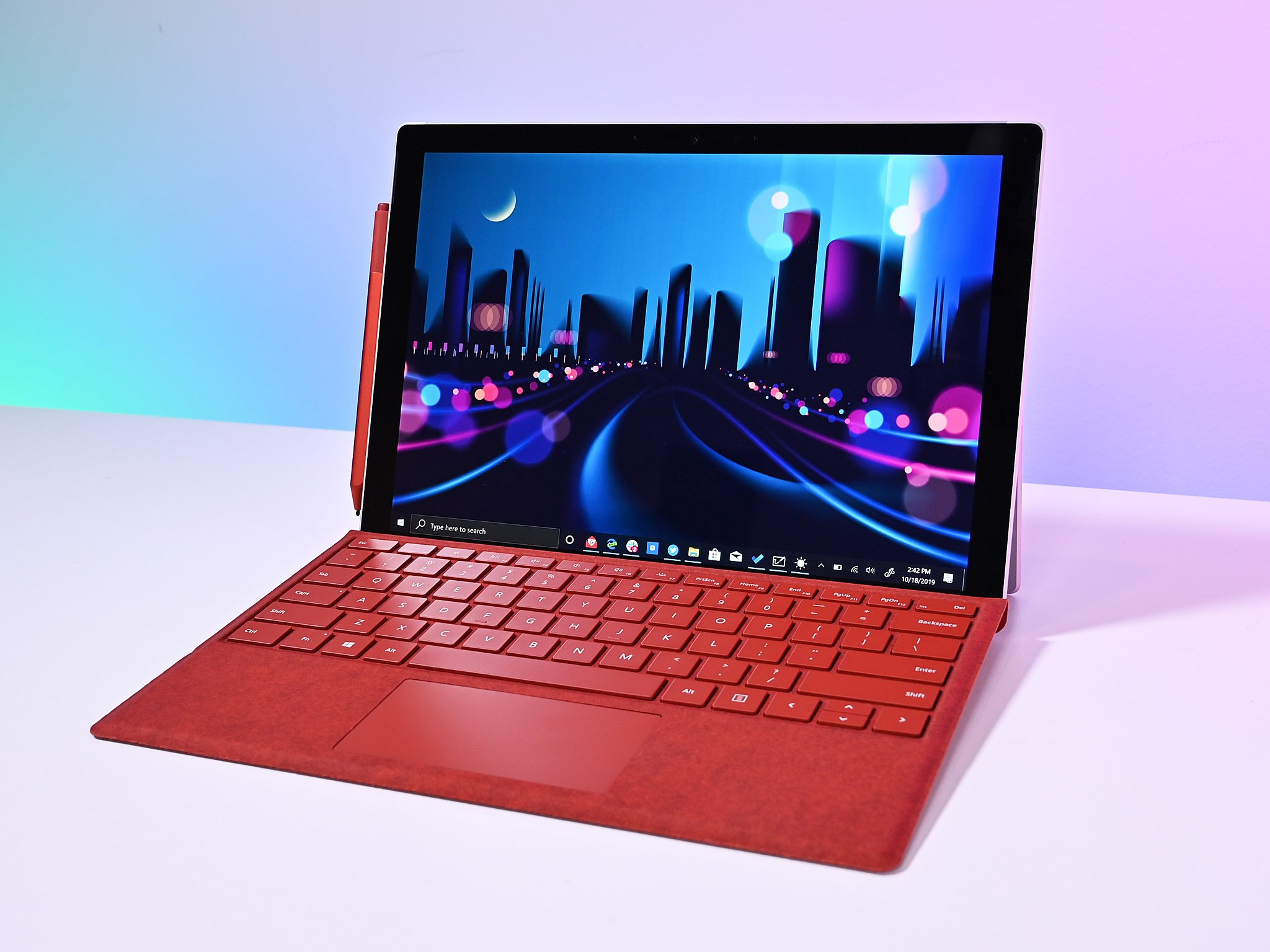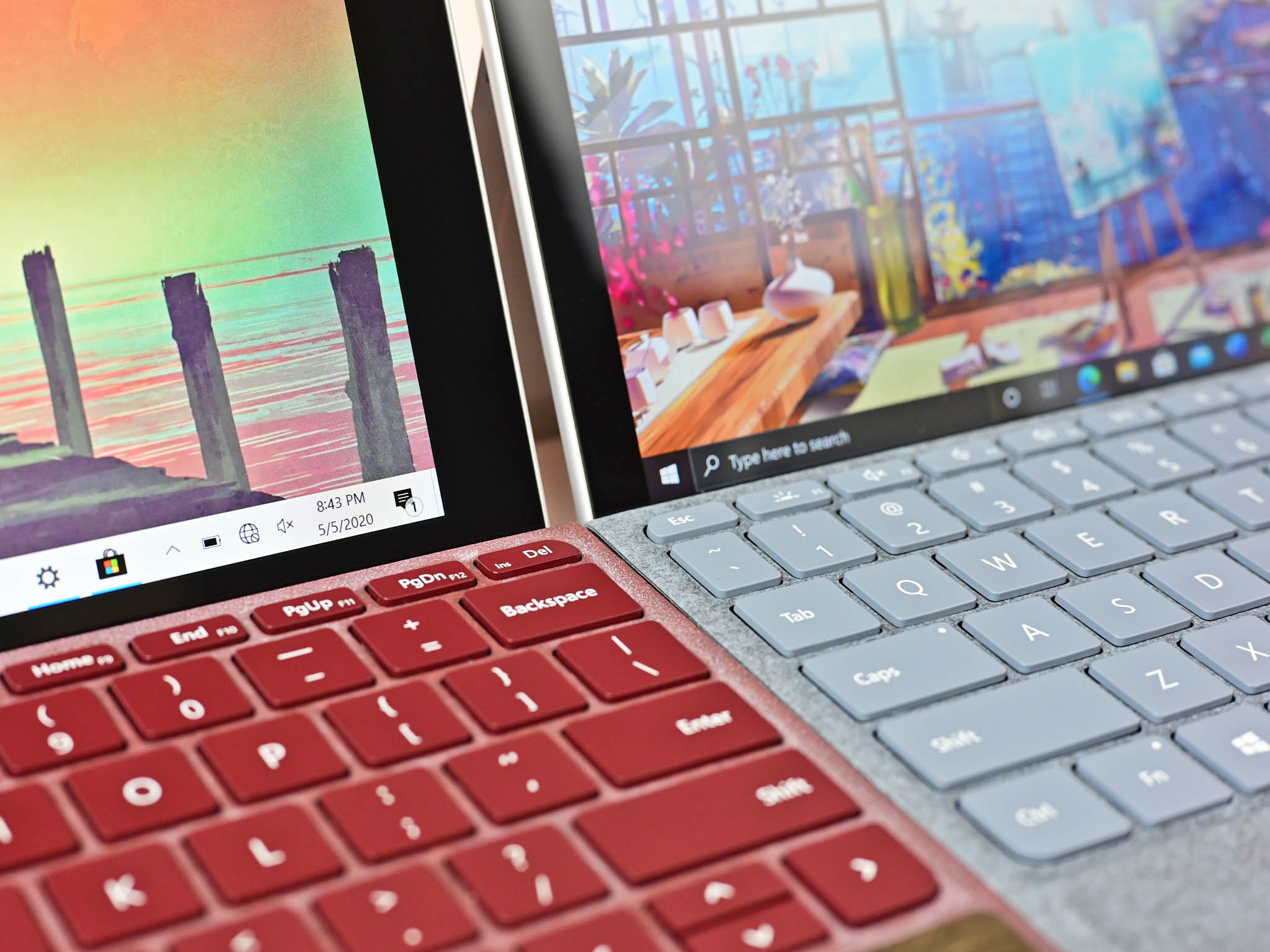Mobile Surface
Surface Go 2
Pros
- LTE & Wi-Fi 6
- Lightweight
- Built-in kickstand
- More affordable
Cons
- Not as powerful
Microsoft made the Surface Go 2 with portability in mind. It's more affordable than the Surface Pro 7, has a slightly better battery life, rocks Intel processors with support for LTE and Wi-Fi 6, and comes rocking a built-in kickstand with a gorgeous lightweight design.
Desktop replacement
Surface Pro 7
Pros
- 10th Gen Intel Core "Ice Lake" CPUs
- Wi-Fi 6
- Built-in kickstand
Cons
- Not as mobile as Surface Go
- Costs more than Surface Go
- No LTE
Microsoft's Surface Pro 7 is the most powerful Surface tablet, thanks to the 10th Gen Intel processors with full support for Wi-Fi 6 and plenty of configuration options. Just be prepared to endure the lack of any dedicated GPU, additional cost for the Type Cover, and charging more often.
Whether you should buy the Surface Go 2 or Surface Pro 7 depends largely on how much you value portability. The Surface Pro 7 isn't heavy by any means, but it's a beast compared to the Go 2. That's because it's vastly more powerful, effectively allowing you to use it as you would your desktop PC.
You can find a whole host of electronics on sale for Amazon Prime Day, and the Surface range can often be found discounted on storefronts. Should you locate the Surface Go 2 or Pro 7 on sale, it's worth considering to save some money in the process. Microsoft also sells numerous other Surface devices at various price ranges and specifications, so you should be able to locate a new portable PC for you.
Surface Go 2 vs. Surface Pro 7: tech specs
| Surface Go 2 | Surface Pro 7 | |
|---|---|---|
| OS | Windows 10 | Windows 10 |
| Processor | Intel Pentium GOLD 4425Y Intel Core m3-8100Y |
10th Gen Intel Core i3-1005G1 Core i5-1035G4 Core i7-1065G7 |
| RAM | 4GB 8GB |
4GB LPDDR4x 8GB LPDDR4x 16GB LPDDR4x |
| Storage | 64GB eMMC 128GB SSD 256GB SSD (commercial) |
128GB 256GB 512GB 1TB |
| Display size | 10.5 inches Touch |
12.3 inches Touch |
| Display resolution | 1920x1280 (220 PPI) | 2736x1824 267 PPI |
| Aspect ratio | 3:2 | 3:2 |
| Graphics | Intel UHD Graphics 615 | Intel UHD (i3) Intel Iris Plus (i5, i7) |
| Ports | 1x USB-C 1x Surface Connect microSDXC card reader 3.5mm headphone jack |
USB-C 3.1 USB-A 3.5mm audio Surface Connect microSD card reader |
| LTE | Yes | No |
| Camera | Front-facing 5MP (1080p) Rear-facing 8MP (1080p) |
Front-facing 5MP (1080p) Rear-facing 8MP (1080p) |
| Biometrics | IR camera | IR camera |
| Battery | Up to 10 hours | Up to 10.5 hours |
| Dimensions | 9.65 x 6.9 x 0.33 inches (245 x 175 x 8.3mm) | 11.5 x 7.9 x 0.33 inches (292mm x 201mm x 8.5mm) |
| Weight | Wi-Fi: 1.2lbs (544g) LTE: 1.22lbs (553g) |
From 1.7 pounds (775g) |
Design and features
Not a lot changed between the Surface Go and Surface Go 2 in terms of design. The dimensions are pretty much the same, so too is the overall build. This allows for all previous generation accessories to continue working with the newer Surface Go—a massive win for anyone upgrading.
The Surface Pro 7 is of a similar affair with Microsoft not going all out with a redesign compared to the previous generation. The Go rocks more rounded, smoother edges and corners that make it easier to hold when being used as a tablet. It also weighs less, coming in at just 544g for the Wi-Fi only version. The Pro isn't exactly massive, but its 775g is noticeable.
Interestingly, both tablets have a kickstand that can rotate 165 degrees and are made of magnesium. They're also similar for cameras with a 5 and 8 megapixel (MP) combo being used for facial recognition in Windows 10. Ports are an interesting separation with the Go 2 coming with a single USB-C, Surface Connect, microSDXC card reader, and a 3.5mm audio jack.
The Surface Pro 7 rocks USB-C, USB-A, 3.5mm audio jack, Surface Connect, and a microSD reader. If you're after LTE capabilities, the Go 2 is your only option right now since Microsoft doesn't offer the Pro 7 with LTE. For both tablets, you can buy a Surface Pen — sold separately for about $100 — and both have Type Covers — also sold separately — with Precision touchpads and an Alcantara fabric finish.
Display
You simply get more screen real estate with the Surface Pro 7, thanks to the 12.3-inch display compared to the Surface Go's 10.5 incher. Color accuracy between the two is roughly the same, so too are the bezels, making it largely down to which display size you'd prefer.
Where there is a difference between the two tablets is resolution. The Pro 7 is a clear winner here with a resolution of 2736x1824 and a pixels-per-inch (PPI) count of 267, which is pretty good. The Go 2 has a resolution of 1920x1280 and a PPI of 220. Both tablets have functional 3:2 aspect ratios, and both have magnets in the side to hold the Surface Pen when not in use.
Performance
Interestingly, while the Surface Pro 7 is the more capable device and comes rocking up to an Intel 10th Gen Core i7-1065G7 CPU, the Surface Go 2 is no slouch. Unlike Intel's low-end CPUs of old, the Intel Core m3-8100Y is rather snappy with daily use. It won't turn heads in benchmarks, but it's more than good enough for general PC use.
Still, if you need more power for a little photo editing on the go, the Surface Pro 7 is where you should spend your money. Storage is another win for Surface Pro 7, which is another small reason it costs considerably more than the Go 2. You can configure it with up to 1TB of storage, while the Go 2 can only max out at 128GB (or 256GB for commercial).
Surface Go 2 for those on the go
See what I did there? But seriously, the Go 2 is ideally suited to those who frequently find themselves moving between location and require a Windows-based tablet for the journey. You've got optional LTE, Wi-Fi 6 support, and various configurations available, starting at a lower price.
Surface Go 2
Better mobility
Portable computing at its finest.
It's cheaper than the Pro 7, but don't think it can't hold its own. The Surface Go 2 comes with LTE and capable Intel hardware, all in a tight package.
Surface Pro 7 for more performance
Get the Surface Pro 7 if you want a tablet that will almost provide a PC-like experience on the go. The speedy Intel Core i7 processor is great at general use and even some more powerful apps, but don't expect desktop-like performance. It's the premium Surface tablet.
Surface Pro 7
More power
An able desktop replacement.
It's bigger than the Surface Go, but its powerful hardware and larger display set it apart as a device that can take the place of a full-sized PC.
via https://AiUpNow.com October 9, 2020 at 03:03PM by Rich Edmonds, Khareem Sudlow,




